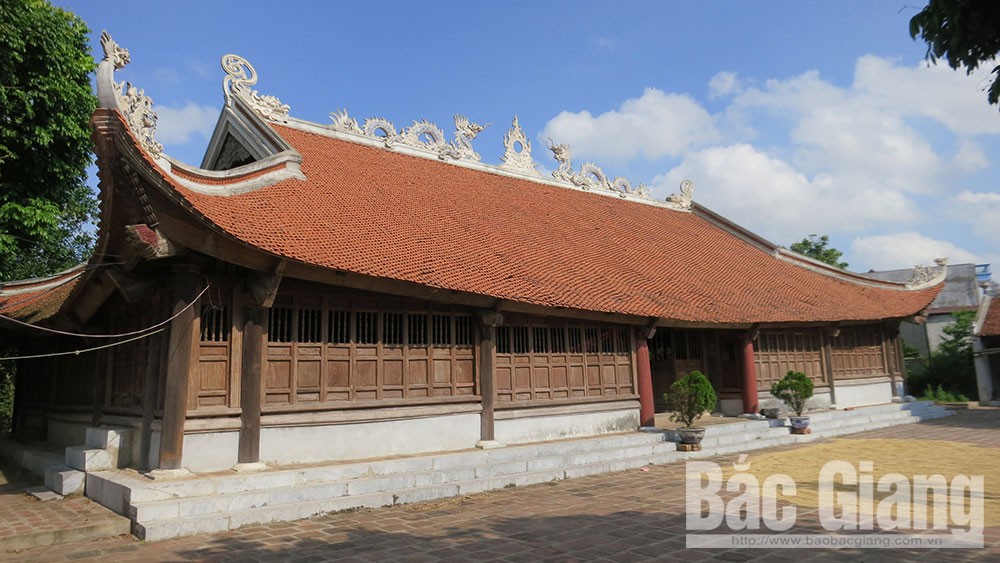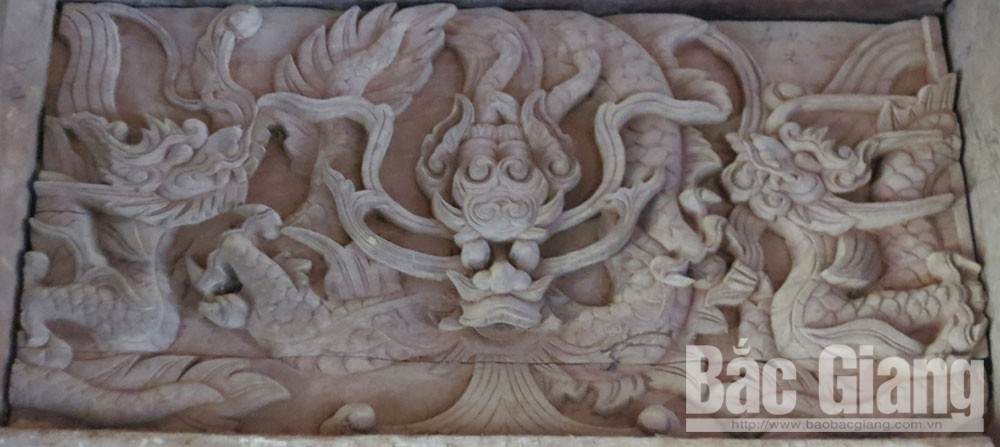Aethestic values of sculptures at Lo Hanh communal house
The fine arts in Mac dynasty was recovered and strongly developed with unique folk cultural features based on the traditional artistic values of the primary Le dynasty. Lo Hanh communal house was built in Mac dynasty (1756). This “greatest communal house of Kinh Bac region” is preserving many traditional carvings of mascots on the architectural structures representing the typical cultural values of this period.
 |
|
Lo Hanh communal house. |
Besides, Mac dynasty marked the diversity of the phoenix images in the architectural works. The image of phoenix at Lo Hanh communal house was carefully carved on woods with long beak, round eyes, backward hair, chubby body and long legs.
The phoenix stands on spiral clouds with flying thin swords symbolizing saints, universe and justice in which its eyes represent the sun and the moon, its back is carrying the sky, its wings symbol the wind, its tail represents the stars, its feather is plants and grass and its legs represent the earth. The image of phoenix at Lo Hanh communal house with flying swords bears super power to call for happiness representing the wish for rain and bumper crops by the wet rice cultivators.
The carving features of phoenix at Lo Hanh communal house embody the free artistic spirit with a desire to go beyond the shapes and sizes to merge into the folk cultural features.
The image of flamingos was found at Lo Hanh communal house for the first time. The flamingos standing firmly have the same features with those of following periods. In addition, a number of little birds pecking the qilin are also found on some carvings at Lo Hanh communal house.
 |
|
The carving at Lo Hanh communal house |
As the carving of qilin at Lo Hanh communal house is symbol of the super power, intelligence and purity, it is believed to control the soul of the pilgrims. The image of two qilins beside the sun at Lo Hanh communal house bears the folk features with tall and well-built body and sitting style like a dog.
Tiger symbolizes the power of the earth. The carving of tiger at Lo Hanh communal house is also a work of folk art with high value. The tiger is in the position of movement and silence. The image is in leaning layout but the tiger’s face seems to look forward while its tail is squeezed upward. Its strong body embodies the hidden power not the fierceness. The curves on its belly, back and tails represent gentleness, flexibility and harmony.
Ancient people believed that tiger governed the earth had power to exorcize, thus it often appears on the front face of the painting in the communal houses and temples. Tiger is not included in the mascots of the super power, thus, its image carved on one piece of wood at Lo Hanh communal house is still a question mark for the researchers.
Dong Ngoc Duong
 Bắc giang
Bắc giang















Reader's comments (0)